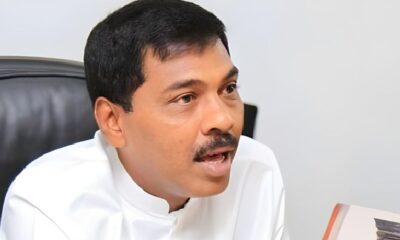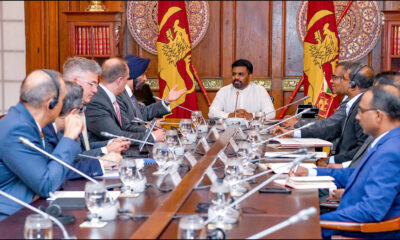FEATURES
International Women’s Day 2023: History, marches and celebrations
Published
2 years agoon
By
editor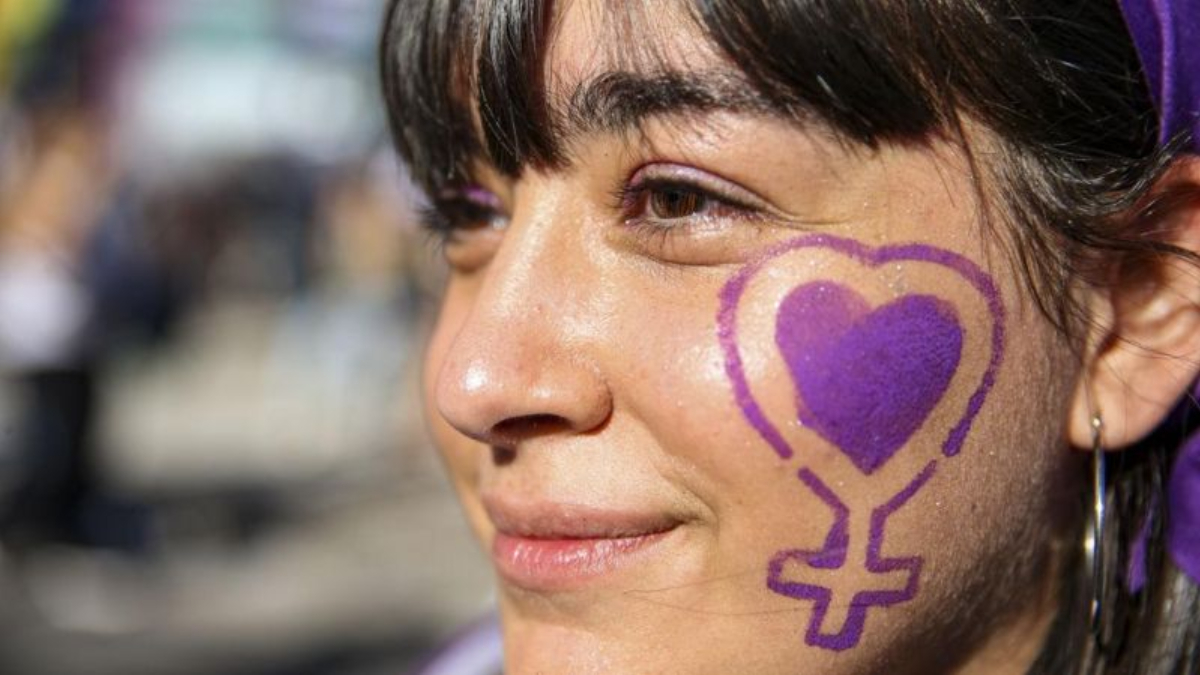
You might have seen International Women’s Day mentioned in the media or heard friends talking about it.
But what is this day for? When is it? Is there an equivalent International Men’s Day? And what events will take place this year?
For more than a century people around the world have been marking 8 March as a special day for women.
Read on to find out why.
How did it start?
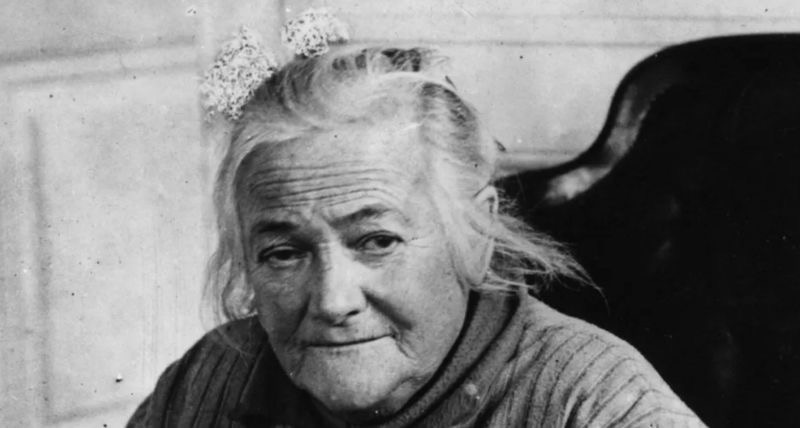
International Women’s Day, also known as IWD for short, grew out of the labour movement to become a recognised annual event by the United Nations (UN).
The seeds of it were planted in 1908, when 15,000 women marched through New York City demanding shorter working hours, better pay and the right to vote. A year later, the Socialist Party of America declared the first National Woman’s Day.
The idea to make the day international came from a woman called Clara Zetkin, communist activist and advocate for women’s rights. She suggested the idea in 1910 at an International Conference of Working Women in Copenhagen. There were 100 women there, from 17 countries, and they agreed on her suggestion unanimously.
It was first celebrated in 1911, in Austria, Denmark, Germany and Switzerland. The centenary was celebrated in 2011, so this year we’re technically celebrating the 111th International Women’s Day.
Things were made official in 1975 when the United Nations started celebrating the day. The first theme adopted by the UN (in 1996) was “Celebrating the Past, Planning for the Future”.
International Women’s Day has become a date to celebrate how far women have come in society, in politics and in economics, while the political roots of the day mean strikes and protests are organised to raise awareness of continued inequality.
Why 8 March?
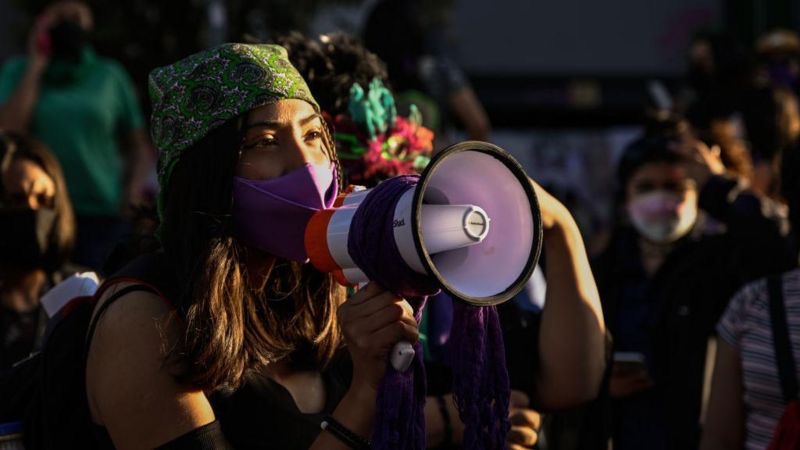
Clara’s idea for an International Women’s Day had no fixed date.
It wasn’t formalised until a war-time strike in 1917 when Russian women demanded “bread and peace” – and four days into the strike the Tsar was forced to abdicate and the provisional government granted women the right to vote.
The date when the women’s strike commenced on the Julian calendar, which was then in use in Russia, was Sunday 23 February. This day in the Gregorian calendar was 8 March – and that’s when it’s celebrated today.
Why do people wear the colour purple?

Purple, green and white are the colours of IWD, according to the International Women’s Day website.
“Purple signifies justice and dignity. Green symbolizes hope. White represents purity, albeit a controversial concept. The colours originated from the Women’s Social and Political Union (WSPU) in the UK in 1908,” they say.
Is there an International Men’s Day?
There is indeed, on 19 November.
But it has only been marked since the 1990s and isn’t recognised by the UN. People celebrate it in more than 80 countries worldwide, including the UK.
The day celebrates “the positive value men bring to the world, their families and communities”, according to the organisers, and aims to highlight positive role models, raise awareness of men’s well-being, and improve gender relations.
How is Women’s Day celebrated?

International Women’s Day is a national holiday in many countries, including Russia where flower sales double during the three or four days around 8 March.
In China, many women are given a half-day off work on 8 March, as advised by the State Council.
In Italy, International Women’s Day, or la Festa della Donna, is celebrated by the giving of mimosa blossoms. The origin of this tradition is unclear but it is believed to have started in Rome after World War Two.
In the US, the month of March is Women’s History Month. A presidential proclamation issued every year honours the achievements of American women.
What is the IWD 2023 theme?

The UN’s theme for 2023 is “DigitALL: Innovation and technology for gender equality”. This theme aims to recognise and celebrate the contribution women and girls are making to technology and online education.
This year, IWD will also explore the impact of the digital gender gap on inequality for women and girls, as the UN estimates that women’s lack of access to the online world will cause a $1.5 trillion loss to gross domestic product of low and middle-income countries by 2025 if action isn’t taken.
But there are also other themes around. The International Women’s Day website – which says it’s designed to “provide a platform to help forge positive change for women” – has chosen the theme #EmbraceEquity with organisers and events seeking to “challenge gender stereotypes, call out discrimination, draw attention to bias, and seek out inclusion”.
Why do we need it?
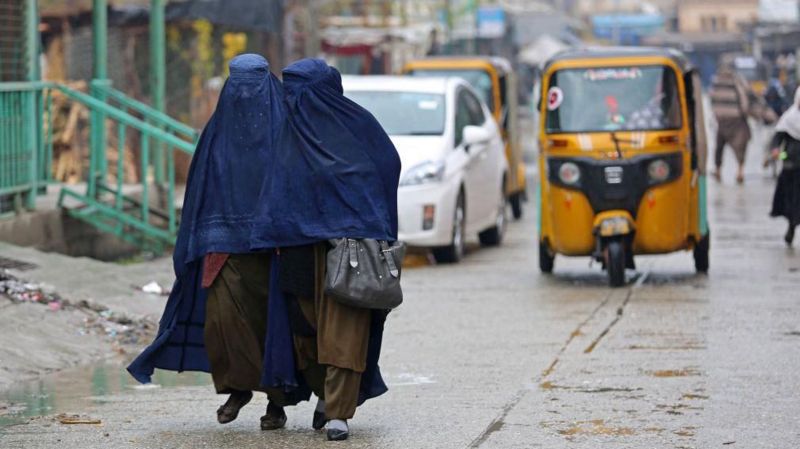
In the past year, women in many countries such as Afghanistan, Iran, Ukraine and the US have been fighting for their rights amid war, violence and policy changes in their respective countries.
In Afghanistan, the resurgence of the Taliban has hindered advancements in human rights with women and girls now banned from higher education, working most jobs outside of the home, travelling long distances without a male chaperone and they are instructed to cover their faces in public.
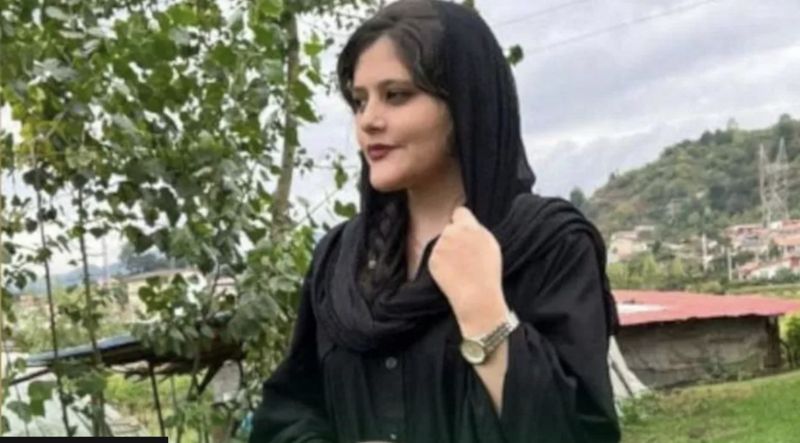
In Iran, protests were sparked by the death of Mahsa Amini, a 22-year-old woman arrested by morality police in Tehran on 13 September 2022 for allegedly violating Iran’s strict rules requiring women to cover their hair with a scarf.
Since then, demonstrations have continued across the country with many Iranians – both female and male – calling for better rights for women and a change from the current political leadership. “Woman, life, freedom” is the slogan of the protests. Authorities have portrayed them as “riots” and responded with force. More than 500 people have died.
Following the invasion of Ukraine by Russian forces on 24 February 2022, the UN report that gender gaps in food insecurity, malnutrition, poverty, and increased gender-based violence have worsened inside Ukraine and around the world due to war-induced price hikes and shortages.
On June 24 2022, the US Supreme Court overturned Roe v Wade, a historic piece of legislation which protected the right to abortion for American women, causing widespread outcry and demonstrations in the US. A number of US women have sought support to get a termination from people in Mexico, where a historic ruling in 2021 effectively decriminalised abortion.
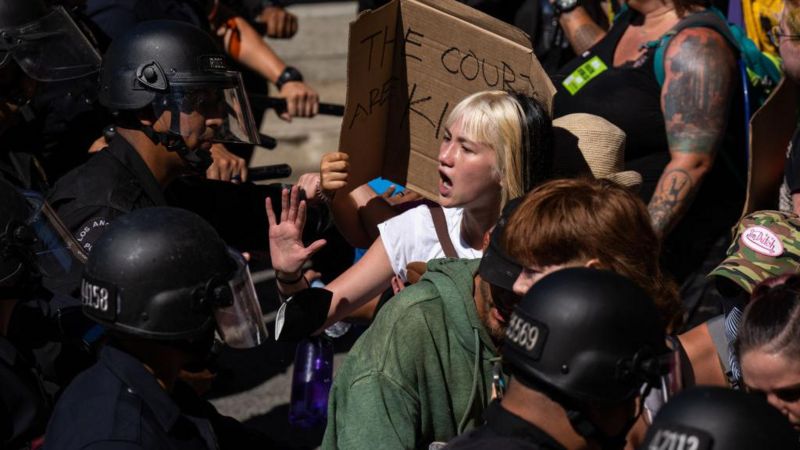
n the past few years though, there has been progress.
In November 2022, the European Parliament passed a law after a 10-year battle to ensure more women are represented on publicly traded companies’ boards by July 2026. “There are plenty of women qualified for top jobs and with our new European law, we will, make sure that they have a real chance to get them,” the EU said.
Meanwhile parental leave laws were updated in Armenia and Colombia, and Spain passed laws to support menstrual health leave and extended access to abortion.
The International Olympic Committee reported the most gender-balanced Winter Games with women making up 45% of athletes at Beijing 2022. Though gender parity wasn’t achieved, new guidelines promoted more balanced coverage of women’s sport.
The Fifa Women’s World Cup in 2023 is newly expanded, with 36 teams taking part. Ahead of the competition, the US Soccer Federation reached a historic agreement to pay its men’s and women’s teams equally, making it the first in the sport to promise both sexes matching money. Female players had filed a number of equal pay claims and lawsuits, arguing their case for more than five years.
(BBC NEWS)
You may like
-
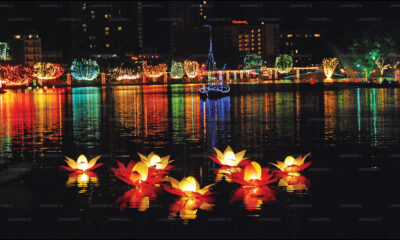

Vesak week commences tomorrow
-


79 shooting incidents in last 7 months
-
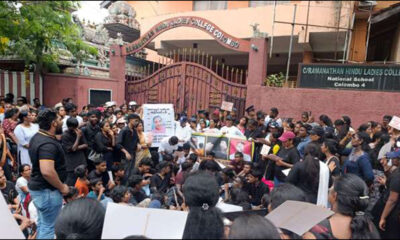

Teacher accused of molesting Kotahena schoolgirl sent on compulsory leave
-


Divi Neguma officer sentenced to 20 yrs. RI for soliciting sexual bribe
-


2 suspects involved In Dan Priyasad murder, identified
-


2nd phase of bidding for luxury vehicles from Prez Secretariat commences
FEATURES
Jewels linked to Buddha remains go to auction, sparking ethical debate
Published
4 days agoon
May 5, 2025By
editor
The jewels comprise nearly 1,800 pearls, rubies, sapphires, and patterned gold sheets
On Wednesday, a cache of dazzling jewels linked to the Buddha’s mortal remains, which have been hailed as one of the most astonishing archaeological finds of the modern era, will go under the hammer at Sotheby’s in Hong Kong.
For over a century these relics, unearthed from a dusty mound in northern India in 1898, have sat largely unseen, cradled by a private British collection.
Now, as the gems prepare to leave the custody of their keepers, they are stirring not just collectors’ appetites but also some unease.
They come from a glittering hoard of nearly 1,800 pearls, rubies, topaz, sapphires, and patterned gold sheets, first glimpsed deep inside a brick chamber in present-day Uttar Pradesh in India, near the Buddha’s birthplace.
Their discovery – alongside bone fragments identified by an inscribed urn as belonging to the Buddha himself – reverberated through the world of archaeology. Nicolas Chow, chairman of Sotheby’s Asia and worldwide head of Asian Art, believes this is “among the most extraordinary archaeological discoveries of all time”.
Yet as these relics now face the glare of the auction room, experts tell the BBC that a question hangs heavy: can the sale of treasures so intimately woven into India’s sacred past be considered ethical?

William Claxton Peppé, an English estate manager, excavated the stupa and found the jewels
In 1898, William Claxton Peppé, an English estate manager, excavated a stupa at Piprahwa, just south of Lumbini, where the Buddha is believed to have been born. He uncovered relics inscribed and consecrated nearly 2,000 years ago.
Historians agree these relics, intact until then, are the heritage of both the Buddha’s Sakya clan descendants and Buddhists worldwide. The bone relics have since been distributed to countries such as Thailand, Sri Lanka and Myanmar, where they continue to be venerated.
“Are the relics of the Buddha a commodity that can be treated like a work of art to be sold on the market?” wonders Naman Ahuja, a Delhi-based art historian. “And since they aren’t, how is the seller ethically authorised to auction them?
“Since the seller is termed the ‘custodian’, I would like to ask – custodian on whose behalf? Does custodianship permit them now to sell these relics?”
Chris Peppé, great-grandson of William, told the BBC the family looked into donating the relics, but all options presented problems and an auction seemed the “fairest and most transparent way to transfer these relics to Buddhists”.
Julian King, Sotheby’s international specialist and head of sale, Himalayan Art, New York told the BBC the auction house had made a thorough review of the jewels.
“As is the case with any important items and collectibles that are offered for sale at Sotheby’s, we conducted requisite due diligence, including in relation to authenticity and provenance, legality and other considerations in line with our policies and industry standards for artworks and treasures,” King said.
Ashley Thompson, of Soas University of London, and curator Conan Cheong, both experts in Southeast Asian art, have more questions. In a joint statement they told the BBC: “Other ethical questions raised by the sale are: should human remains be traded? And who gets to decide what are human remains or not? For many Buddhist practitioners around the world, the gems on sale are part and parcel of the bones and ash.”
The sale of the relics has also sparked concern among Buddhist leaders.
“The Buddha teaches us not to take other people’s possessions without permission,” Amal Abeyawardene of London-based British MahaBodhi Society, told the BBC. “Historical records indicate that the Sakyamuni clan were granted custody of these relics, as the Buddha emanated from their community. Their wish was for these relics to be preserved alongside adornments, such as these gems, so that they may be venerated in perpetuity by the Buddha’s followers.”

The jewels were unearthed from this stupa in Piprahwa, northern India in 1898
Chris Peppé has written that the jewels passed from his great-uncle to his cousin, and in 2013 came to him and two other cousins. That’s when he began researching their discovery by his great-grandfather.
The Los Angeles-based television director and film editor wrote he had found 1898 newspaper reports – from Reuters to the New York Tribune – announcing the find of Buddha’s remains.
“The colonisation of India by the British had been a source of some cultural shame for me [and continues to be] but, amidst the treasure hunters who hauled their finds back to England, there had also been people focused on the pursuit of knowledge,” Chris Peppé writes.
He noted his research revealed a lot about his ancestors who he had dismissed as “prejudiced Victorians from a bygone era”.
“I learned that Willie Peppé’s first wife chose to travel around India for her honeymoon and loved the country and its culture. Sadly, she died from an unspecified illness. I learned that my grandmother was outraged at the land laws that applied to Indian women.
“And I learned that the excavation of the stupa was an attempt by Willie Peppé to provide work for his tenant farmers who had fallen victim to the famine of 1897.”

The jewels are considered among the most extraordinary archaeological finds of all time
He writes his great-grandfather’s “technical diagrams of ramps and pulleys suggest that he was also a trained engineer who couldn’t resist a project”.
William Peppé handed the gems, relics and reliquaries to the colonial Indian government: the bone relics went to the Buddhist King of Siam (Rama V). Five relic urns, a stone chest and most other relics were sent to the Indian Museum in Kolkata – then the Imperial Museum of Calcutta.
Only a small “portion of duplicates”, which he was allowed to keep, remained in the Peppé family, he notes. (Sotheby’s notes say Peppé was allowed to keep approximately one-fifth of the discovery.)
Sources told the BBC the auction house considers the “duplicates” to be original items considered surplus to those donated, which the “Indian government permitted Peppé to retain”.
Over the past six years years, the gems have featured in major exhibitions, including one at The Met in 2023. The Peppé family has also launched a website to “share our research”.

Four containers made of steatite (a type of stone) and one made of rock crystal were found inside a sandstone box at the Piprahwa stupa
Some scholars argue Buddha relics should never be treated as market commodities.
“The Sotheby’s auction transforms these highly sacred materials into saleable objects, in continuation of acts of colonial violence which extracted them from a stupa and called them ‘gems’ and ‘objects of interest to Europeans’, creating a false division with the ash and bone fragments they were consecrated with,” say Thompson and Cheong.
Chris Peppé told the BBC that in all the monasteries he had visited “no Buddhists regard these as corporeal relics”.
“A few Buddhist academics at western universities have recently offered a convoluted, fact-defying logic whereby they may be regarded as such. It’s an academic construct that is not shared by Buddhists in general who are familiar with the details of the find,” he said.
Peppé said the family “looked into donation [of the relics] to temples and museums and they all presented different problems on closer scrutiny”.
“An auction seems the fairest and most transparent way to transfer these relics to Buddhists and we are confident that Sotheby’s will achieve that.”
Some also point to The Koh-i-Noor, seized by the British East India Company and now part of the Crown Jewels, with many Indians viewing it as stolen. Should the Buddha’s jewels be next?
“Repatriation, I believe, is seldom necessary,” says Ahuja. “Such rare and sacred relics that are unique and which define a land’s cultural history, however, deserve the government’s exceptional attention.”
– Soutik Biswas
(India correspondent – BBC News)
FEATURES
What has Sri Lanka gained from EU GSP “Plus” since 2007?
Published
7 days agoon
May 3, 2025By
editor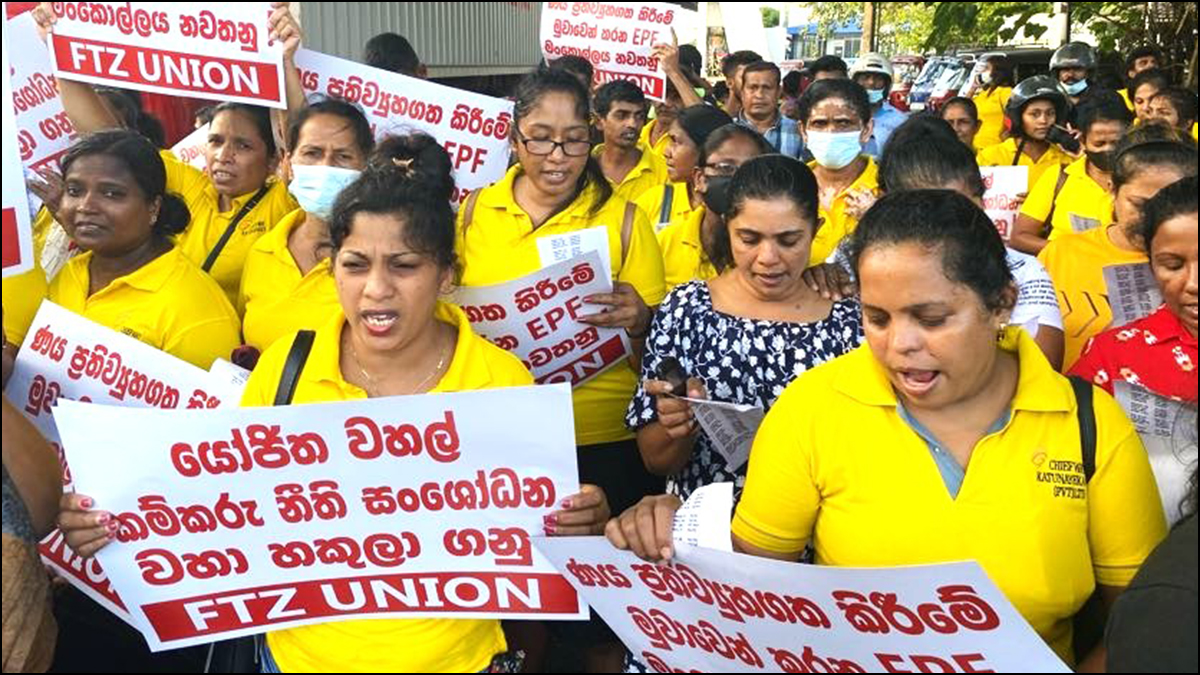
Let me say this straight and clear. “Sri Lanka has not gained anything on EU conditions laid down to qualify Sri Lanka for EU GSP+ post-Tsunami special offer”. What does the EU offer us and what have we to comply with?
EU offers “zero duty” exports for over 700 listed Sri Lankan products including apparels, rubber and fish products, bicycles, toys, tea and spices, electrical parts and few others to the EU market. That means, though our present basket is limited, over 700 Sri Lankan products can be sold in the EU market at subsidised “zero duty” prices, hopefully gaining increasing volumes. But who gains on increased value on sales?
With heavy corruption across geographical borders including money laundering, this is one major question that is not being asked and answered in detail by the government nor by the manufacturers. What is manufactured here for exports are exclusive “orders” from “Brands” received by product manufacturing companies through “Suppliers” on quoted and agreed prices. They not only have agreed prices, but agreed deadlines in handing over the finished product with pre-defined quality standards. What it means is, a “supplier” brings an order from a global “brand” and a manufacturing company with BOI-SL approval located in Sri Lanka that accepts the order is paid for its manufacture. That product is sold in a consumer market including the EU by its “brand” at a price fixed by the “brand”.
Once the supplier takes over the product from the Sri Lankan manufacturer, we don’t have anything to do with its sales in any consumer market. In simpler language, we don’t have anything to do with the product, once it leaves Colombo port. This too is important. The “zero duty” export concession is provided to listed Sri Lankan products and not to Sri Lanka. It is therefore enjoyed by the “brand” that owns the “product label”, perhaps with a share to the “supplier” on pre-agreed terms. May be, the SL manufacturer too gets “something” through the “supplier”, but that is wholly unofficial and out of public gaze. But for sure, that does not reach Sri Lanka and is not Sri Lanka’s gain.
What are we as a country expected to comply with, to continue with this GSP+ that brings us no economic benefits? First qualification is, Sri Lanka has to remain below the “Upper Middle Income” (UMI) category of countries. Thereafter, Sri Lankan government has to ensure implementation of 27 International Conventions that cover human rights, labour standards and rights, environmental protection and good governance. This does not mean ratification of “conventions” that SL has done in most instances, but also effectively implementing them with new laws and legal amendments where necessary.
Beyond economics, this requirement in effectively and sustainably democratising the Sri Lankan society is definitely worth complying with. Yet, all through past years when EU GSP+ was effective and in operation, neither SL governments nor the EU were serious about any of the 27 international conventions the EU imposed on SL to implement. The EU has sent 03 or 04 GSP+ Review Missions to Sri Lanka during these 17 or 18 years, that met numerous agencies, groups and individuals including the Head of State, relevant ministers, Opposition Leader and politicians, private sector trade unions and funded civil society activists in Colombo. All such review missions left Sri Lanka with a nod for an extension of GSP+ though with reservations at times on delays in implementation, except in 2010 when the EU was under pressure from Tamil Diaspora groups after the civil war was declared over in 2009 May.
This suspension was effective till 2017 for 07 whole years. The new government elected in January 2015 thereafter re-applied for GSP+ in 2016 June. What is important to note is that, during the 07 years SL was denied the “comfort” of “zero tariff” exports to Europe, Sri Lanka’s exports did not drop. According to the “Brief on International Trade” published by the Department of Commerce in October 2021, during the 02 years after the withdrawal of GSP+ the value of Sri Lankan products sold in European markets totalled 01.8 billion Euro. A little more than what it was in 2016, the year before the GSP+ suspension. Surprisingly, the value of merchandise from Sri Lanka sold in European markets during the next few years increased to around 02 billion Euros, before SL regained GSP+ in 2017. It only means, with or without EU GSP+, Sri Lankan products would be there in the EU market.
What needs to be stressed is, 10 plus years of EU GSP+ in full operation (that excludes the suspension), private sector labour that manufacture all Sri Lankan products in the EU markets, have not gained even the basic right to association and therefore not even collective bargaining, except in 01 factory out of over 1,600 factories. Repeal of the notorious repressive law, the PTA that was promised to be repealed way back in 2017 by the then government, is now said to take few more months if it does happen under the present regime and the EU Review Mission seems “okay” with it too. Environmental safety is under an axe with continued deforestation no matter who the government is. Breakdown in law, organised crime and mega corruption that involves the State hierarchy as well, would speak volumes about what “good governance” goes through despite EU monitoring of EU GSP+ with regular extensions.
End of the day, if the EU is not serious about having their conditions implemented, and if Sri Lankan governments can go on dragging their promises for democratisation over decades with no economic gains either, we are only wasting our tariff and tax incomes in billions doled out as annual incentives topping up free infrastructure provided to foreign direct investors, expecting them to provide us with much wanted forex. We need something more than a forensic audit to see how much we have lost as incentives given to export manufacture, a seriously corrupt sector most do not speak about.
That’s a wee bit about EU GSP+ and we Sri Lankans for now.
– Kusal Perera
2025 May 02
FEATURES
Apple says most US-bound iPhones no longer made in China
Published
1 week agoon
May 2, 2025By
editor
Apple says it is shifting production of most iPhones and other devices to be sold in the US away from China, which has been the focus of President Donald Trump’s tariffs.
The majority of the iPhones bound for the US market in the coming months will be made in India, while Vietnam will be a major production hub for items like iPads and Apple Watches, chief executive Tim Cook says.
It comes as the technology giant estimated that US import taxes could add about $900m (£677.5m) to its costs in the current quarter, despite Trump’s decision to spare key electronics from the new tariffs.
The Trump administration has repeatedly said it wants Apple to move production to America.
The estimate comes as firms around the world are scrambling to respond to the huge shifts in global trade triggered by Washington’s trade policies.
On a call with investors on Thursday to discuss the firm’s financial performance, the Apple boss seemed keen to draw attention to its investments in the US.
Mr Cook opened the discussion with a reminder of the company’s plans to invest $500bn across several US states over the next four years.
Made in India
He also said Apple is shifting its supply chain for US-bound products away from China, but it is India and Vietnam that are poised to be major beneficiaries of that move.
“We do expect the majority of iPhones sold in US will have India as their country of origin,” Mr Cook said.
Meanwhile, Vietnam will be the chief manufacturing hub “for almost all iPad, Mac, Apple Watch and AirPods product sold in the US.”
China will remain the country of origin for the vast majority of total products sold outside the US, he added.
Apple shares had plummeted after Trump announced his administration would levy “reciprocal tariffs” on products imported to the United States, with the aim of persuading companies to manufacture more in the US.
But his administration faced significant pressure to moderate its plans. Shortly after the tariffs went into effect, it announced that certain electronics, including phones and computers, would be exempted.
Uncertainty reigns
For now, trade turmoil has left Apple’s sales unscathed.
The company said revenues for the first three months of the year rose 5% from the same period last year, to $95.4bn.
Designed in US, made in China: Why Apple is stuck
Trump tells business chiefs he needs ‘little bit of time’ as US economy shrinks
Trump calls Bezos as Amazon says no plan to show tariff price rises
Amazon, another tech giant whose results were being closely watched for signs of tariff damage, likewise said sales were holding up, rising 8% year-on-year in its North America e-commerce business in the most recent quarter.
It forecast similar growth in the months ahead.
“Obviously no one of us knows exactly where tariffs will settle or when,” said Amazon boss Andy Jassy, while noting that the firm has emerged from periods of disruption – like the pandemic – stronger than before.
“We’re often able to weather challenging conditions better than others,” he said. “I’m optimistic this could happen again.”
New positioning
The shift of the iPhone supply chain to India was “impressive” according to Patrick Moorhead, chief executive of Moor Insights & Strategy.
“This is a marked change from what [Cook] said a few years back when he said that only China can build iPhones,” Mr Moorhead said.
“There is lots of progress that Apple must show here but it’s a pretty good start,” he said.
Amazon is also repositioning itself to increase resilience in the face of the tariffs.
The company said it working to make sure it had a diversity of sellers and Mr Jassy said he felt the firm was well-positioned for the months ahead, pointing to the firm’s scale and its role supplying everyday essentials.
For now, it said sales had not been hurt by the tariff turmoil. If anything, executives said the business may have benefited from some customers starting to stockpile.
Overall sales jumped 9% to $155.7bn in the first three months of 2025, compared with the same period last year, while profits surged more than 60% year-on-year to roughly $17bn.
Lily Jamali – North America Technology Correspondent
Natalie Sherman- Business reporter
(BBC News)

Vesak week commences tomorrow

79 shooting incidents in last 7 months











